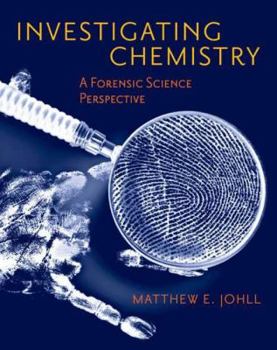Investigating Chemistry: A Forensic Science Perspective
Select Format
Select Condition 
Book Overview
The role of science to criminal investigations has inspired hit television shows and is captivating millions of people. Now there is a new chemistry book that uses a unique forensic chemistry theme to introduce basic chemical concepts to students who are not science-savvy but who must take a science course to fulfill requirements. Matthew Johll's refreshing new approach gives students a captivating new context for learning the fundamentals of chemistry and helps them sort the facts from the fiction when it comes to the crime-solving capabilities of current chemical practice.
Format:Hardcover
Language:English
ISBN:0716764334
ISBN13:9780716764335
Release Date:March 2006
Publisher:W. H. Freeman
Length:704 Pages
Weight:2.42 lbs.
Dimensions:10.2" x 0.8" x 8.2"
Customer Reviews
1 rating
From a chemistry newbie
Published by Thriftbooks.com User , 18 years ago
This book was purchased for a college class in beginning chemistry and is far from the standard dry science text. The author gives clear detail about chemistry with interwoven bits of forensic science to give body to the dryer chemistry information. I've found I can remember the chemistry better by remembering a comparison to soil samples or whatever else the author uses as an example. While one can learn chemistry by reading a dry text and practicing the problems given, the method this author uses is absorbed and understood with far more depth. Without going into gory detail, the author describes a crime scene and the case that sprouted from it. Then the author teaches chemistry by giving facts about chemistry. The information is easy to read and keeps the attention of the reader by comparing basic chemistry to applications of chemistry in forensic science. The final word is the chemistry teacher did well by the students in choosing this book.






